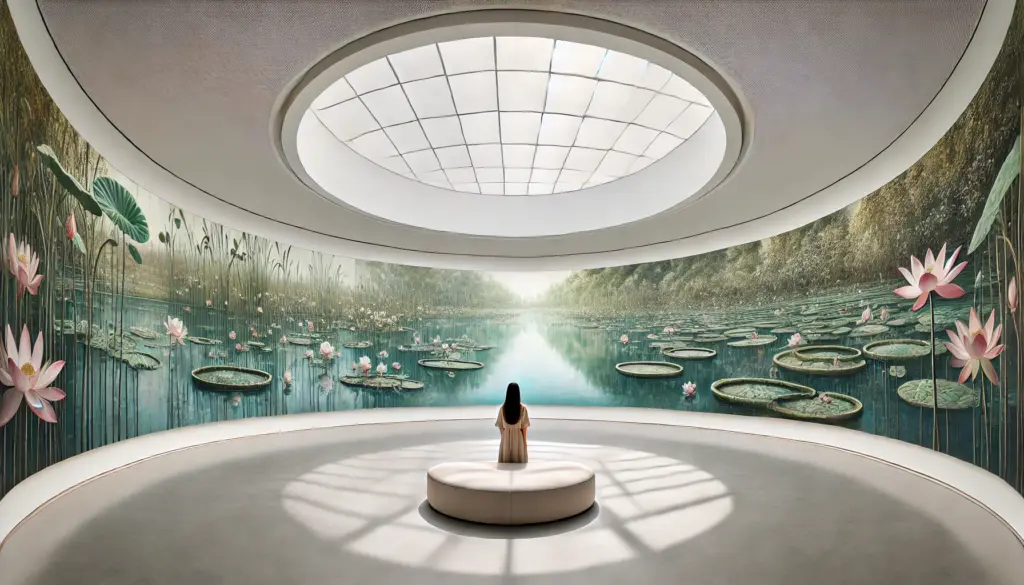ChatGPT:The Musée de l’Orangerie is a renowned art museum located in the Tuileries Garden, Paris. It is best known for its collection of Impressionist and Post-Impressionist paintings. The museum houses eight large Water Lilies murals by Claude Monet, displayed in two oval rooms designed specifically for them, creating an immersive experience for visitors.
Besides Monet’s masterpieces, the museum’s collection includes works by artists such as Paul Cézanne, Henri Matisse, Amedeo Modigliani, Pablo Picasso, Pierre-Auguste Renoir, and others. The building itself was originally constructed in 1852 as a winter shelter for the orange trees of the Tuileries Garden, hence the name “Orangerie.” Today, it is a part of the Réunion des Musées Nationaux and offers a serene and intimate setting for viewing some of the world’s most iconic art.
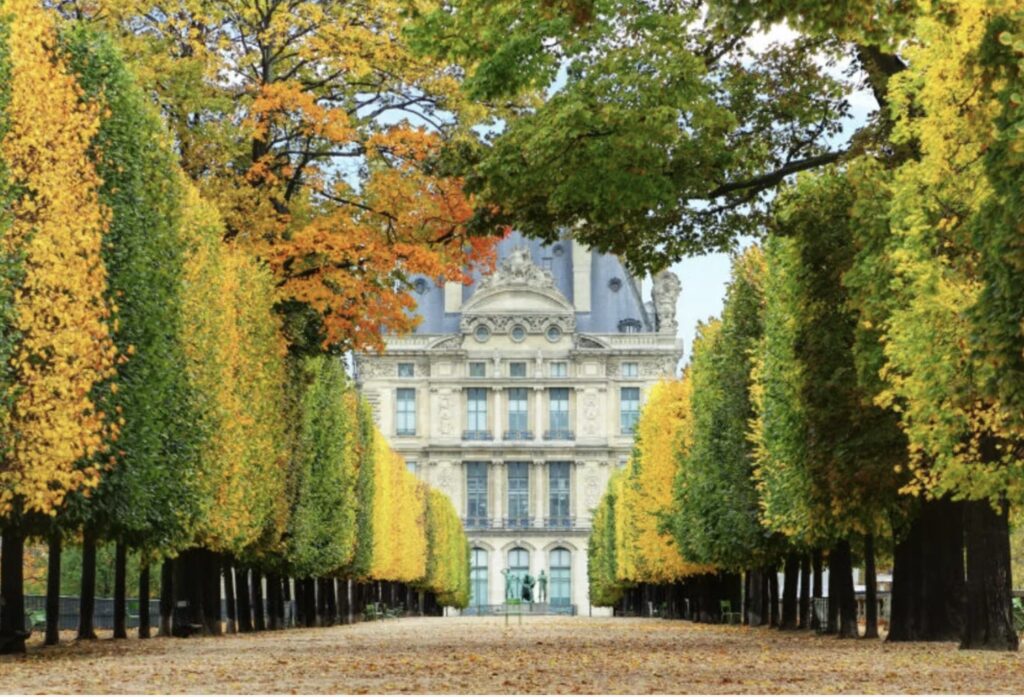
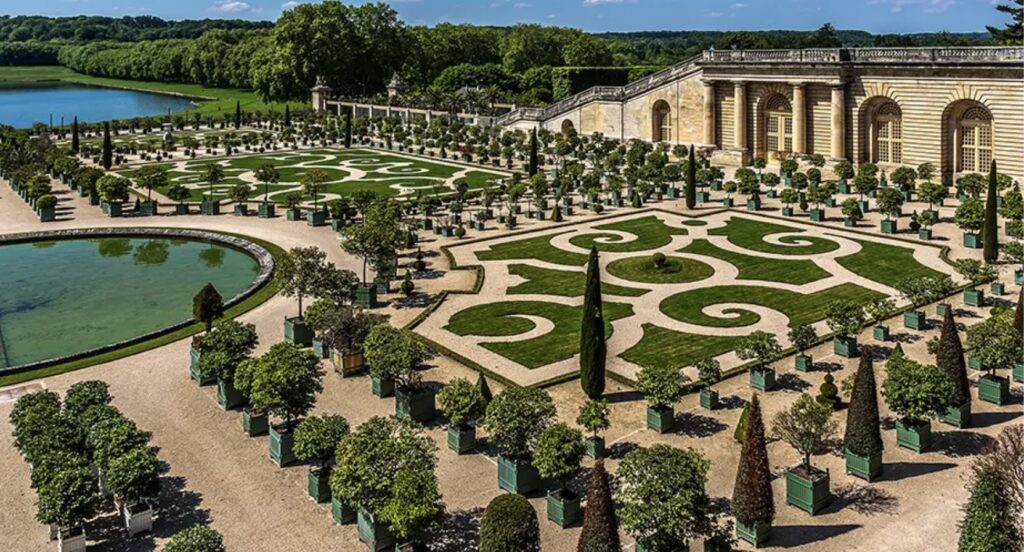
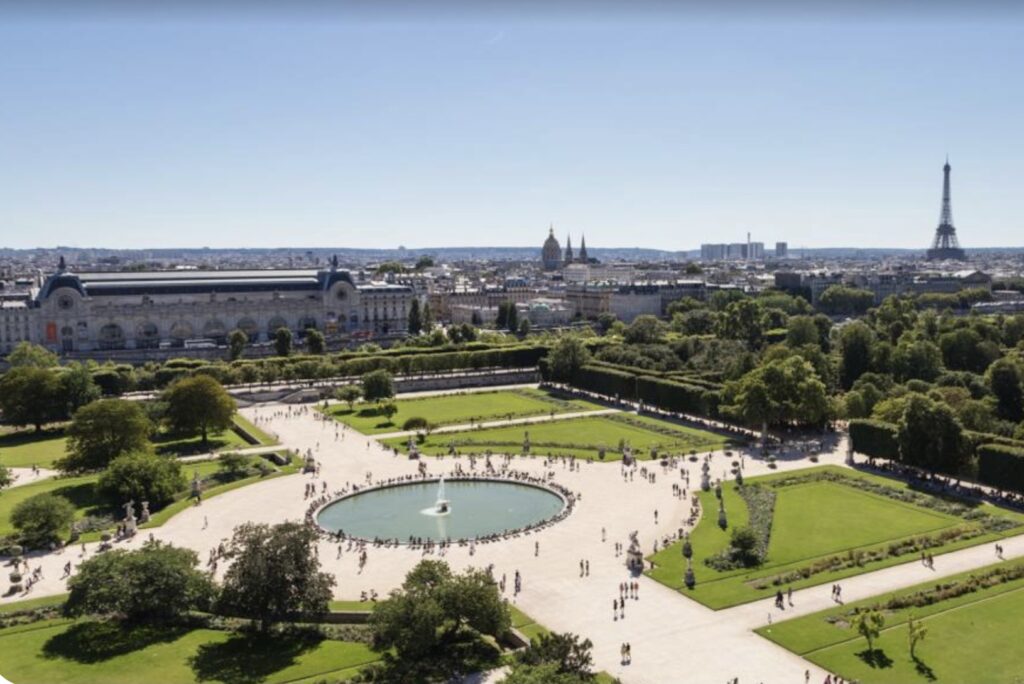
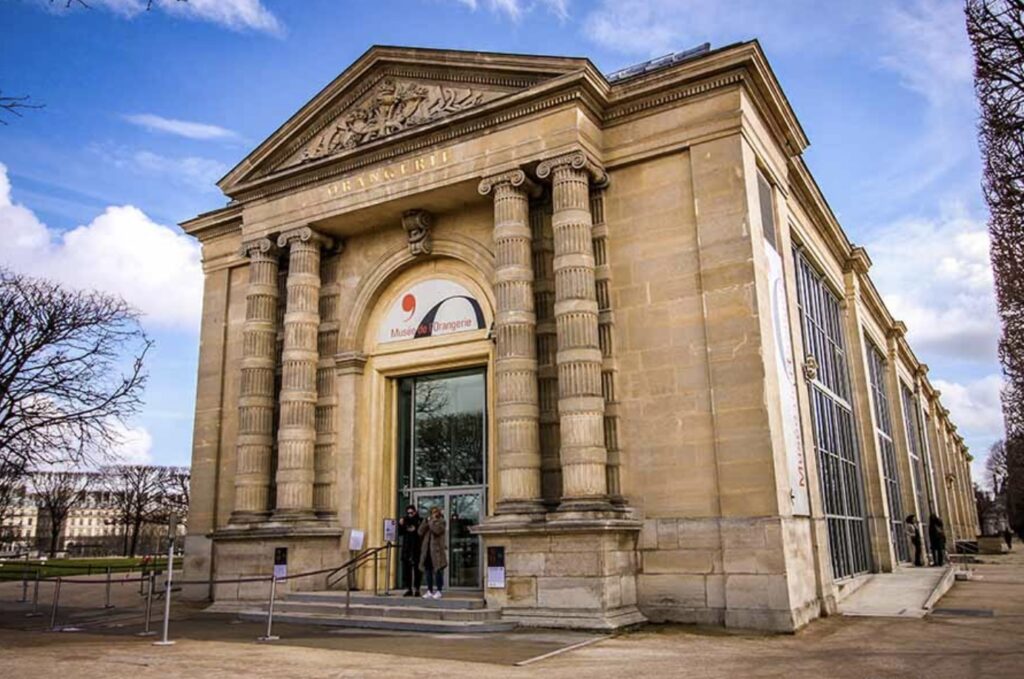
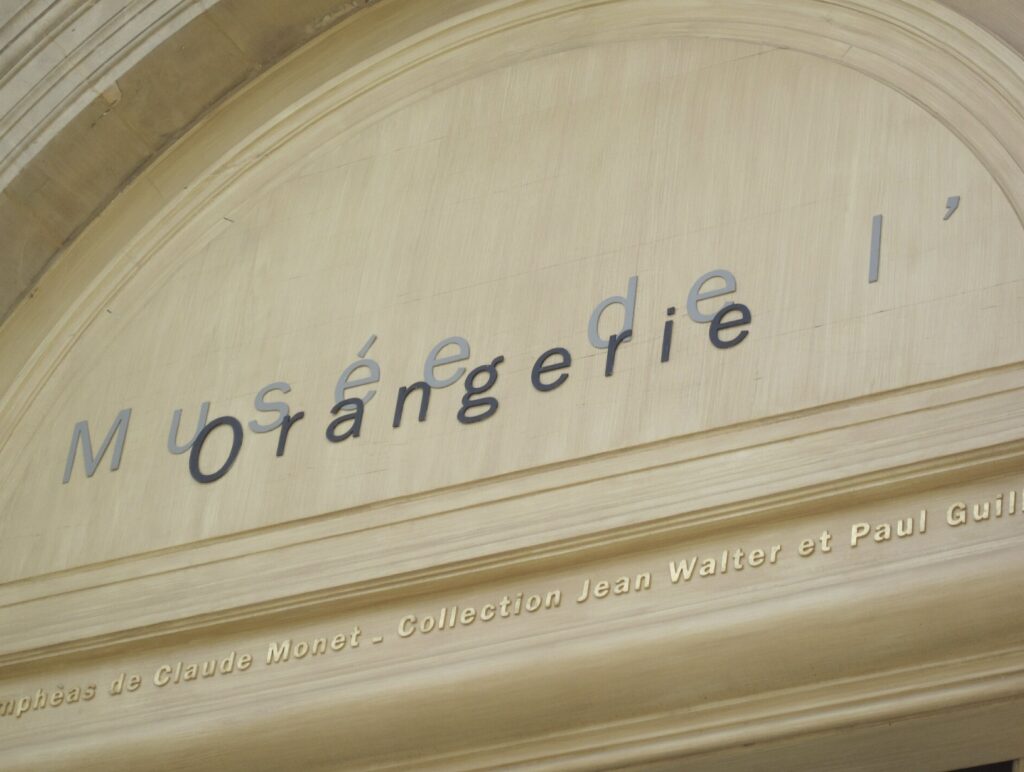
The architectural design of the Musée de l’Orangerie reflects both its historical roots and its modern adaptations for displaying art.
- Original Structure: The building was constructed in 1852 to serve as a greenhouse for orange trees from the Tuileries Garden. The design was functional, with large windows and a long, rectangular shape to allow ample sunlight for the plants. The neoclassical façade features elegant columns and simple, yet dignified lines typical of mid-19th-century architecture.
- Large Windows and Skylights: The museum retains its large windows, which allow natural light to fill the interior. This natural illumination is particularly well-suited for the art displayed within, as it highlights the colors and textures of the paintings. In the galleries housing Monet’s Water Lilies, skylights provide soft, diffused light that enhances the viewing experience.
- Interior Layout: The interior has been carefully designed to enhance the experience of the artworks. The two oval rooms dedicated to Monet’s Water Lilies create an immersive environment, with the paintings encircling the viewer. The walls of these rooms are curved, and the benches in the center invite visitors to sit and absorb the panoramic scenes. The use of white walls and minimalist decor in these rooms focuses attention entirely on the artwork.
- Basement Galleries: The museum also features a lower level that was added during renovations. This area houses the Jean Walter and Paul Guillaume collection, which includes works by many leading Impressionist and Post-Impressionist artists. The basement galleries are well-lit and spacious, with a modern design that contrasts with the historic architecture above.
- Accessibility and Modern Amenities: The museum has been updated to meet modern standards of accessibility and comfort. This includes the installation of elevators and ramps, climate control systems to preserve the artworks, and modern security systems.
Overall, the Musée de l’Orangerie balances its historical architecture with contemporary enhancements, providing an elegant and contemplative space for art lovers.
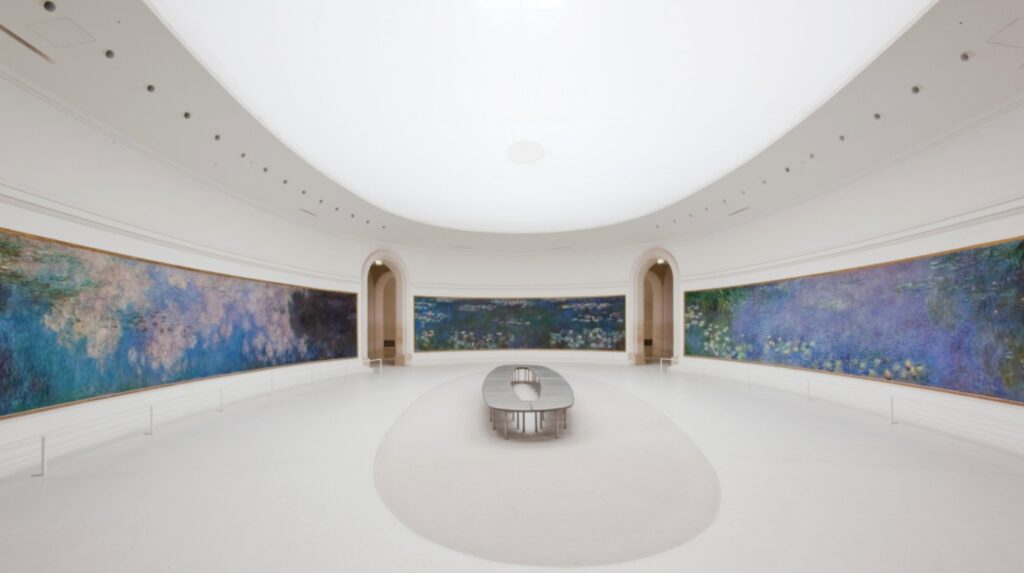

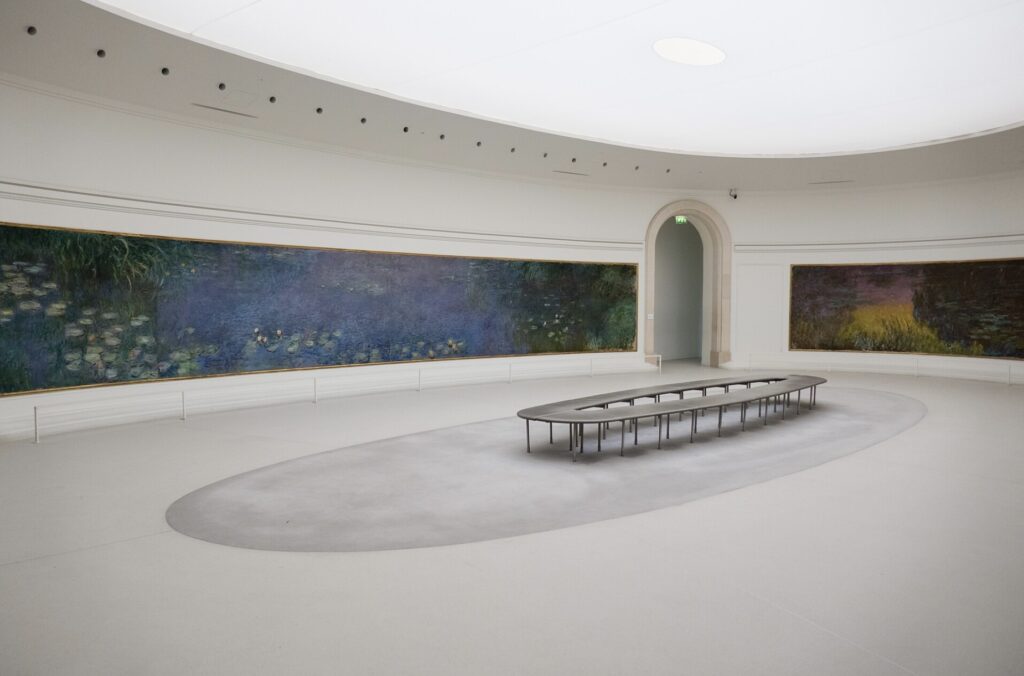
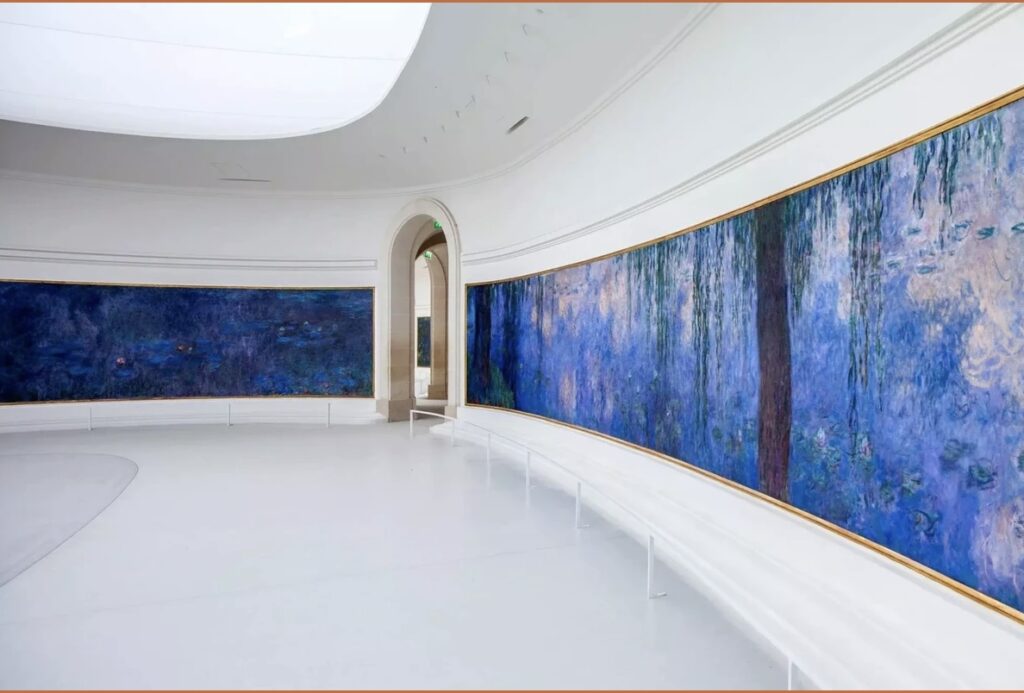

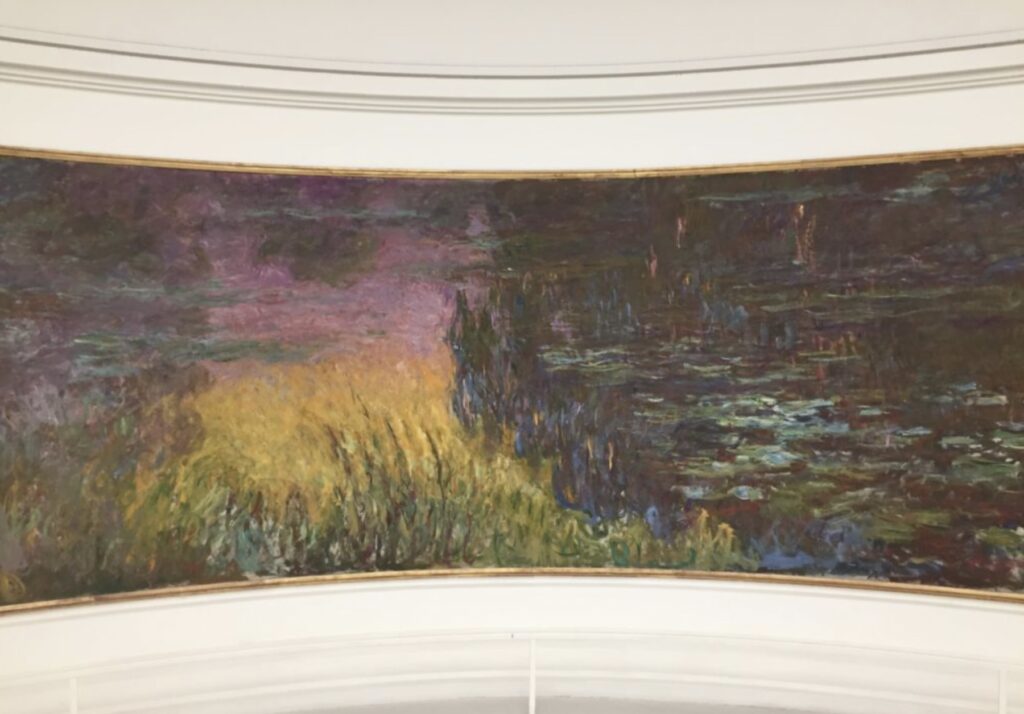
The two oval rooms of the Musée de l’Orangerie, designed specifically to house Claude Monet’s Water Lilies murals, are unique architectural spaces that significantly enhance the viewing experience of these iconic works.
Room Design:
- Oval Shape: The rooms are uniquely oval in shape, which creates an intimate and immersive environment. This design allows the viewer to feel surrounded by the paintings, giving a sense of being enveloped in Monet’s serene water garden at Giverny.
- Natural Lighting: The rooms are equipped with diffused natural lighting from overhead skylights. This soft, indirect light enhances the colors and subtle details in the paintings, simulating the changing light of day, which was a key inspiration for Monet.
- Continuous Panorama: The murals are installed on curved walls, allowing for a continuous panoramic view. This layout eliminates corners, creating an uninterrupted flow and making the large-scale works appear as if they extend beyond the physical limits of the room.
- Minimalist Interior: The interior of the rooms is minimalist, with white walls and simple benches in the center. This simplicity ensures that the focus remains solely on the artwork, providing an unobstructed view and encouraging contemplation.
Enhancement of the Artworks:
- Immersive Experience: The oval shape and the placement of the murals create an immersive experience, where visitors can feel as though they are stepping into the scenes depicted. This setup accentuates the expansive and tranquil nature of the water lily ponds Monet portrayed.
- Atmospheric Effects: The design captures the essence of Monet’s intention to evoke a calm and meditative atmosphere. The gentle, diffuse light from the skylights enhances the subtle color transitions and reflections in the water, a hallmark of Monet’s technique.
- Spatial Perception: The curvature of the walls and the room’s layout influence the viewer’s spatial perception, drawing them into the depth and perspective of the paintings. This effect mirrors Monet’s exploration of light, space, and reflection in his garden scenes.
- Enhanced Focus: The minimalist decor and lack of distractions direct all attention to the artwork, allowing viewers to fully engage with the emotional and visual impact of the murals. The arrangement invites visitors to spend time absorbing the details and nuances of Monet’s brushwork and color palette.
Overall, the oval rooms of the Musée de l’Orangerie are masterfully designed to complement and enhance Monet’s Water Lilies, providing a space where the art can be experienced in a serene and contemplative manner.
The idea of housing Claude Monet’s Water Lilies in the unique oval rooms at the Musée de l’Orangerie began with Monet himself. In the later years of his life, Monet conceived the Water Lilies series as a grand, immersive installation that would envelop viewers and provide a serene, contemplative space.
Monet’s Vision:
- Creation of the Water Lilies Series: Monet began painting the Water Lilies series in the 1910s, inspired by the water garden at his home in Giverny. He envisioned these large-scale paintings as a way to create a peaceful, immersive experience for viewers, capturing the changing light and reflections on the water throughout the day.
- Gift to France: As Monet aged, he decided to donate a set of these paintings to the French state as a symbol of peace, following the devastation of World War I. He wanted the works to provide a tranquil space for reflection and solace.
- Choosing the Orangerie: Monet personally chose the Musée de l’Orangerie as the home for these works. The building’s proximity to his home in Giverny, as well as its peaceful location in the Tuileries Garden, made it an ideal choice. Monet worked closely with the architect Camille Lefèvre to design the two oval rooms specifically for the display of the murals.
Design and Construction:
- Architectural Adaptations: The Orangerie underwent significant modifications to accommodate Monet’s vision. The oval shape of the rooms was designed to enhance the immersive experience of the Water Lilies, allowing visitors to be surrounded by the artwork. The rooms’ skylights were added to provide the natural, diffuse lighting that Monet preferred.
- Opening to the Public: The installation was completed and opened to the public in 1927, a few months after Monet’s death. The project realized Monet’s vision of a “refuge of peaceful meditation,” as he described it.
- Legacy and Influence: The installation of Monet’s Water Lilies at the Orangerie was groundbreaking at the time and influenced the design of later immersive art experiences. The layout and presentation highlighted the connection between the viewer and the artwork, emphasizing the sensory and emotional impact of the environment.
Thus, the concept and execution of housing Monet’s works in this specific way were deeply rooted in Monet’s artistic vision and personal intentions. The Musée de l’Orangerie continues to honor this legacy by preserving the unique design and atmosphere of the space.
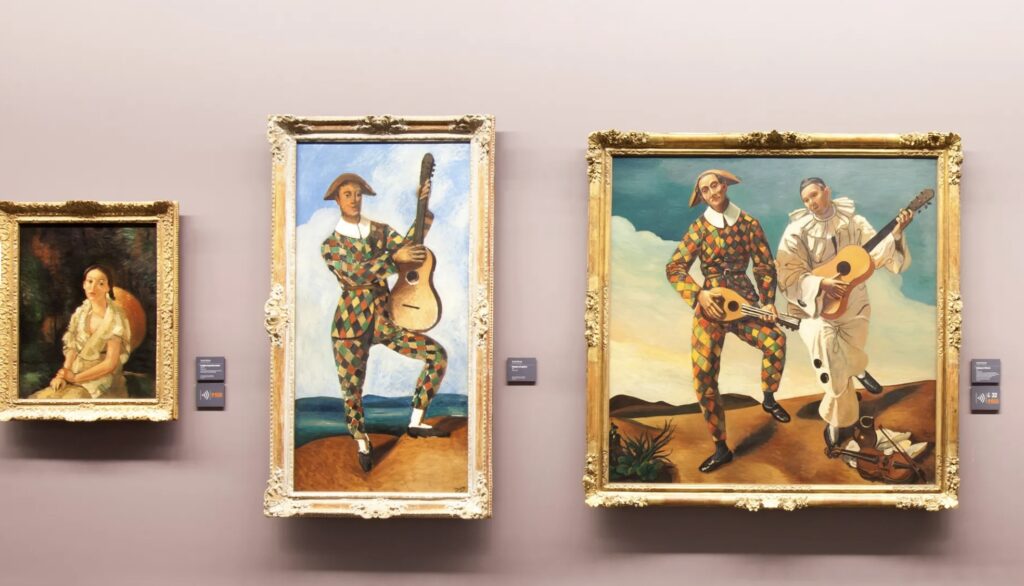
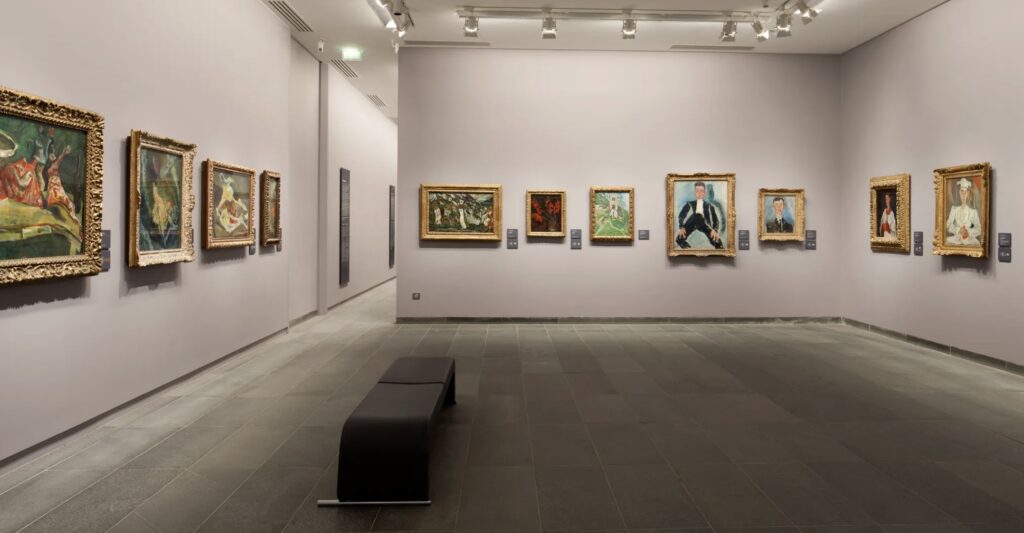
To truly appreciate the Musée de l’Orangerie and its masterpieces, consider a multifaceted approach that combines immersive experiences, creative engagement, and reflective contemplation. Here are some suggestions:
1. Immersive Experience:
- Timed Visits: Visit the museum during less crowded hours to fully immerse yourself in the peaceful atmosphere of the Water Lilies rooms. Spend time in quiet contemplation, allowing the serene environment and Monet’s work to envelop you.
- Mindful Observation: Practice mindfulness while observing the paintings. Focus on the interplay of light, color, and reflection in Monet’s works. Notice the subtle transitions and brushwork details that capture different times of day and seasons.
2. Creative Engagement:
- Sketching and Drawing: Bring a sketchbook and pencils to the museum. Spend time sketching your favorite artworks, focusing on capturing the essence rather than perfect replication. This practice can deepen your appreciation of the techniques and compositions used by the artists.
- Art Journaling: Keep a journal to write down your thoughts, emotions, and observations as you explore the museum. Reflect on how the art makes you feel and any insights you gain from the experience.
3. Educational Exploration:
- Guided Tours and Talks: Participate in guided tours or lectures offered by the museum. These can provide valuable context and insights into the artists, their techniques, and the historical and cultural backdrop of their works.
- Art History Research: Before your visit, read about the artists featured in the museum’s collection. Understanding their backgrounds, influences, and the art movements they were part of can enrich your experience.
4. Interdisciplinary Connection:
- Music and Art: Listen to classical or impressionist music while viewing the artworks. Music can enhance the emotional impact of the visual experience and create a multisensory connection to the art.
- Poetry and Prose: Consider reading or writing poetry or prose inspired by the artworks. This can be a personal response to the emotions and themes expressed in the paintings.
5. Engaging with Nature:
- Stroll Through the Tuileries Garden: After visiting the museum, take a leisurely walk through the Tuileries Garden. The natural beauty of the garden complements the art inside the museum and provides a space for further reflection.
- Photography: If allowed, take photographs of the garden and the exterior of the museum. Use these photos as inspiration for creative projects or as a way to capture the experience.
6. Discussion and Sharing:
- Art Discussion Groups: Join or start a discussion group focused on the art of the Musée de l’Orangerie. Share your experiences and interpretations with others, and explore different perspectives.
- Social Media Sharing: Share your visit on social media, highlighting your favorite pieces and what they mean to you. Engage with other art enthusiasts to broaden your understanding and appreciation.
By combining these activities, you can create a rich and memorable experience at the Musée de l’Orangerie, deepening your connection to the art and the space.
